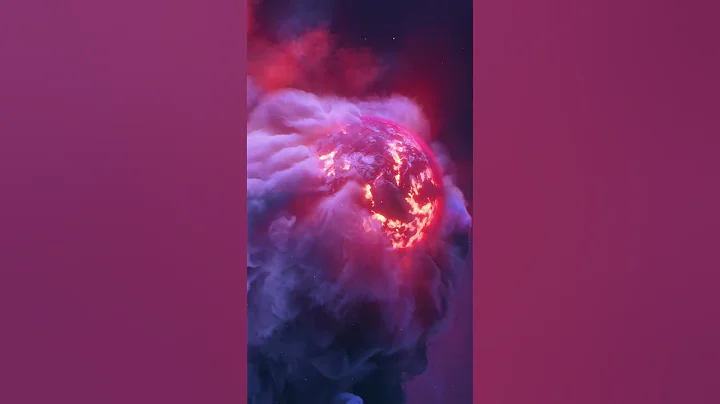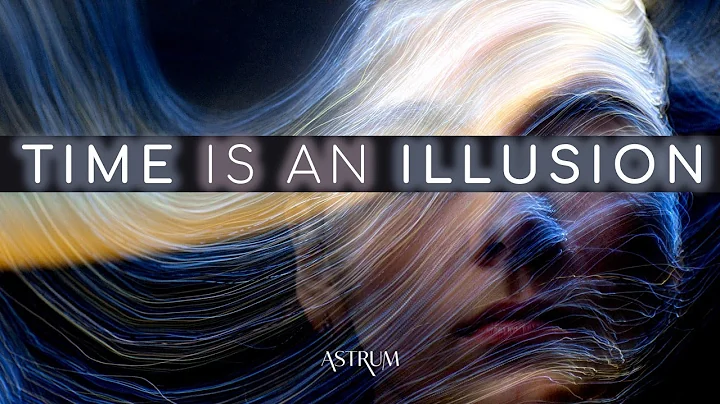How was the universe born? How was the solar system born? How was the earth born? How were humans born? What is the end of the universe like? These questions have troubled mankind for a long time. Although we have been exploring the universe for a long time, we have not found the answers to these questions so far.

The current mainstream view is that the universe was born approximately 13.8 billion years ago. About 13.8 billion years ago, an extremely dense point suddenly experienced inflation, and then the Big Bang began. Later, as the universe continued to expand and cool down, it finally gradually formed what we see now. The sky is filled with stars. And the stars we see in the night sky are not small stars, but huge stars, planets and other stars. Similarly, if we go deep into the depths of the universe and look back at our home on earth, our home on earth is just a small bright spot. In the famous photo "Dull Blue Dot" taken by the Voyager 1 probe , our earth is like this. The earth only occupies 0.12 pixels of the entire photo.

A similar scene was captured by the Cassini probe near Saturn, which is about 1.4 billion kilometers away from the earth. On July 19, 2013, the Cassini probe looked back at the Earth from the gap in Saturn while orbiting Saturn, and took a photo of the Earth. Because Saturn just blocked the sun at that time, it could not be seen in the picture. The sun only sees the earth, a small bright spot, and there is an even smaller bright spot next to the earth, which is the moon.

We once thought that the earth was the center of the universe. These photos have once again changed our understanding, allowing us to see the smallness of the earth and the insignificance of human beings. If these detectors fly farther, they may not be able to see the earth. . This is what the earth looks like from the depths of the universe. If we have advanced telescopes, what will the end of the universe look like?

What is the end of the universe?
The universe is really too big. It has been in existence for more than 13.8 billion years. Ordinary telescopes can't really see the end of the universe, so we humans didn't actually know what the end of the universe looked like before. But now an advanced telescope has appeared, and it has sent back beautiful photos, allowing us to see the scene at the end of the universe.

This telescope is James Webb Space Telescope . Speaking of space telescopes, everyone may immediately think of the Hubble Telescope . After all, this telescope has been operating in space for more than 30 years. Many of the exquisite photos of the universe we see were taken by the Hubble Telescope. . Since the Hubble Telescope has been in operation for a long time, many of its equipment have lagged behind the times and can no longer meet the requirements of scientists. Therefore, the new generation of James Webb Space Telescope came into being, and it was born to obtain the Hubble Telescope.

On December 25, 2021, the James Webb Space Telescope with a cost of up to 10 billion US dollars was launched. Its main reflecting mirror has a diameter of 6.5 meters and an area more than 5 times that of the Hubble Telescope. Although the aperture is larger, the James Webb Space Telescope is lighter, only 6.2 tons, less than half of the Hubble Telescope.

As a new generation of space telescope, the James Webb Space Telescope has more powerful performance and can capture farther scenes. The James Webb Space Telescope has been operating in space for more than half a year now. On July 11, 2022 local time, the United States released the first full-color image taken by the James Webb Space Telescope. This full-color photo shows us the clearest picture of the early universe since human exploration of the universe. It is also the most distant scene of the deep universe that we humans have photographed so far.

On July 12, 2022, NASA released five images taken by the James Webb Space Telescope.These five photos are SMACS 0723 galaxy cluster, the Great Carina Nebula, Stephen's Quintuple Galaxy , the Southern Ring Nebula and exoplanet WASP-96b, covering the dense galaxy group , deep space galaxy clusters, diffuse nebulae and The most cutting-edge research fields in astronomy such as exoplanets.

Among them, the SMACS 0723 galaxy cluster includes thousands of galaxies. The gravitational lensing effect caused by the huge mass of this galaxy cluster significantly bends the light of more distant galaxies. In this photo, the James Webb Space Telescope even captured a scene 13.1 billion years ago, which is a scene of the early universe more than 1 billion years after the Big Bang. This is the clearest and deepest infrared image of the distant universe ever captured by mankind. It took the James Webb Space Telescope 12 hours to complete the image.

Where will mankind go in the future?
These photos show us the scene in the depths of the universe more than 13 billion light years away. There are so many galaxy clusters and exoplanets in the depths of the universe. Will there be extraterrestrial life, extraterrestrial civilizations, and suitable conditions? What about the planet we humans live on? From a probability perspective, there should be countless habitable planets like the Earth in the depths of the universe. After all, there are countless exoplanets. Even if the proportion of habitable planets is extremely low, the number will exceed our imagination. Previously, scientists have selected 24 "super habitable" planets from more than 4,000 known exoplanets. Scientists believe that life on these "super habitable" planets may be more comfortable than on Earth. Therefore, there are many "super habitable" planets like this in the depths of the universe, but it is difficult to say whether humans can immigrate to these "super habitable" planets.

Because the universe is really too big. Current research shows that the diameter of the observable universe is 93 billion light-years. Let alone reaching the end of the universe, at this stage we humans cannot even get out of the solar system. The Voyager 1 and 2 probes have been flying for more than 40 years and cannot even see the edge of the solar system. Scientists believe that these two probes are expected to need to continue flying for tens of thousands of years before they can truly leave the solar system and reach other stars. It is close to . It is obviously unrealistic to travel to habitable exoplanets at such a speed. Therefore, even if there are countless habitable planets in the depths of the universe, the earth will still be our only home for humans for a long time to come, and protecting our home on earth is still one of the most important things at present.





















